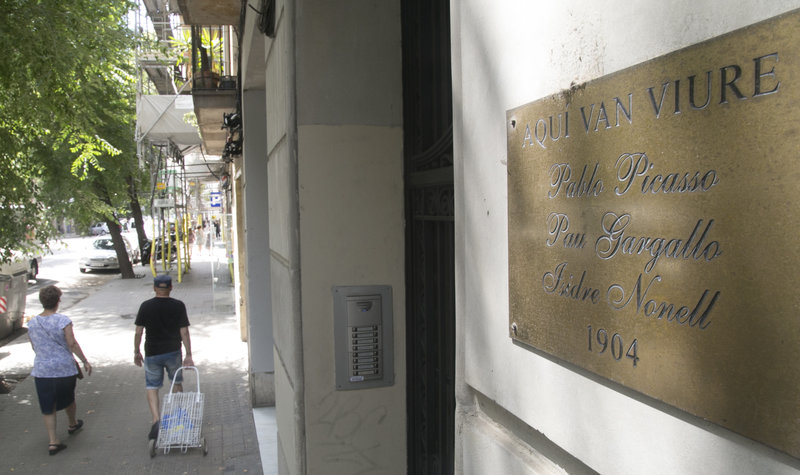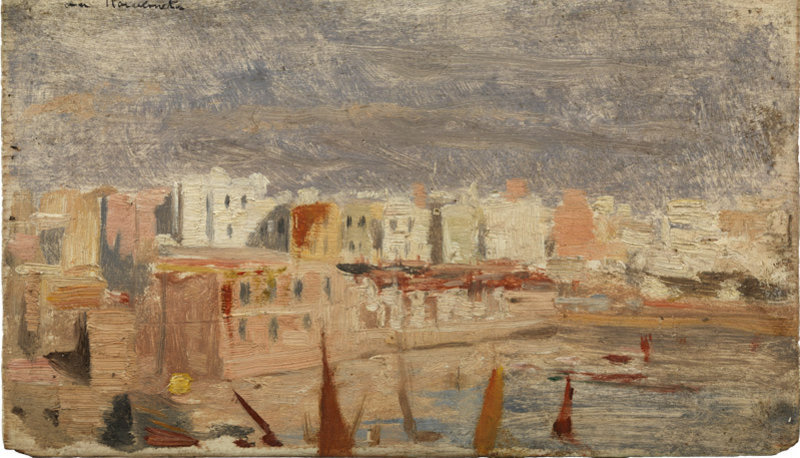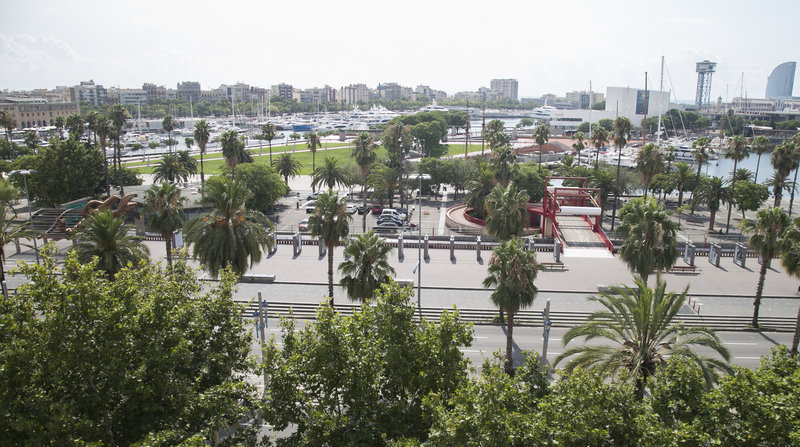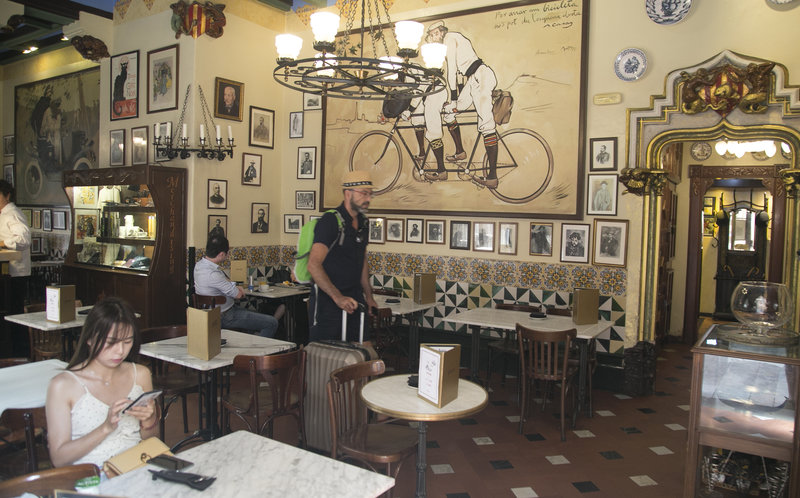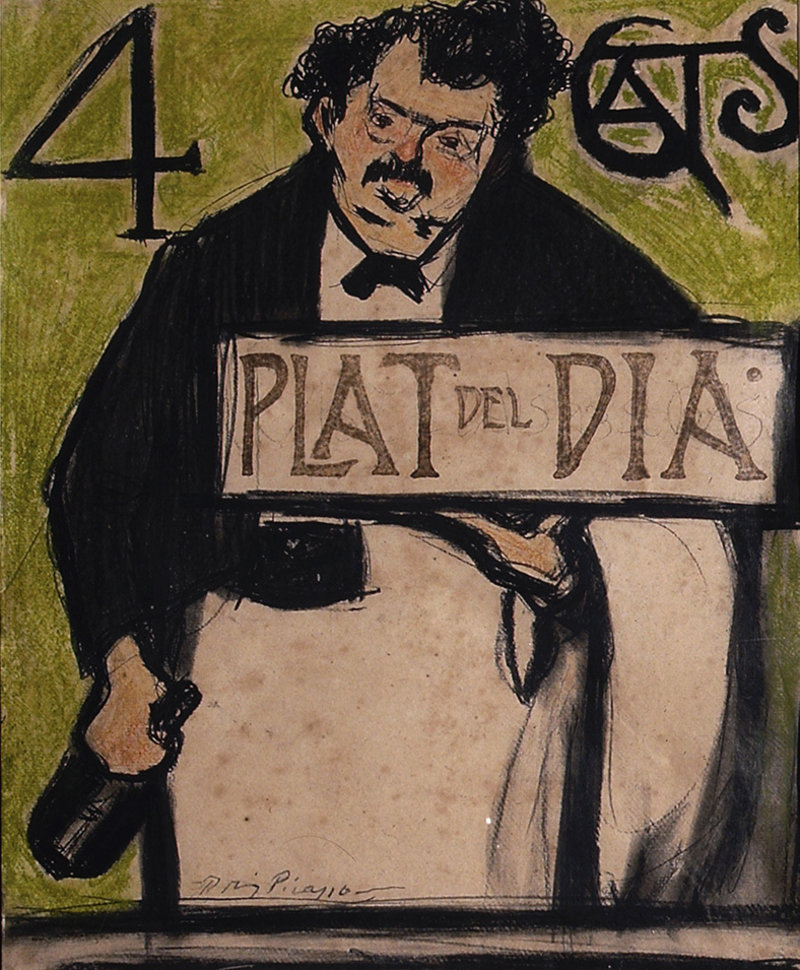Picasso, alive in Barcelona
There are still many corners of the Catalan capital that bear witness to the passage of the artistic genius during his time spent in the city
Like any Barcelona resident, Picasso loved a stroll during the years he lived in the Catalan capital, from 1895 (when he arrived aged 13) to 1904. Let’s follow him, then, on one of his strolls.
It’s night and he is to meet his friends to go to the Eden Concert music hall on carrer Nou de la Rambla. Later, they will finish the night off with a visit to the brothel next door. Before that, however, he has to visit the Pitxots, on carrer Montcada. Along the way he meets up with Manolo Hugué, who lives on carrer Assaonadors. He makes a note that the next day he has an appointment at the summer residence of Emili Fontbona, on carrer Pàdua, which is a little far, but worth it because he has promised him that he will show him how to do his first sculpture.
Picasso and Barcelona. Barcelona and Picasso. City and artist each left indelible marks on the other. Picasso visited Barcelona for a final time in 1934. In a way, he never left. “Wherever he could not go physically, he went in his imagination,” says Eduard Vallès, Picasso expert and modern art conservator at the MNAC national gallery.
Nor has Barcelona escaped Picasso. It keeps him alive, and not only in the museum with his name. There are streets and places where he lived, had fun, made friends, where he had studios and where he showed his work. These places have mostly been conserved, and they evoke what the city meant for this young man from Malaga.
Barcelona is like a huge open-air Picasso museum. It is a constellation of spaces impregnated with his experiences where the artist posed questions never before asked and which activated his creative potential. Picasso knew he could paint as well as anyone, but it was not enough. In Barcelona he decided he wanted to paint differently. And Barcelona showed him the way.
It is a path that any resident or visitor can follow today. “Few cities in the world show such a powerful link between artist and city, because many places from that time remain,” says Vallès.
One thing that spurred Picasso on during his time in Barcelona were his acquaintances with artists and writers with the same restlessness to create. Barcelona breathed creativity. And Picasso had a good pair of lungs. He was as motivated by being alongside the likes of poet Rafael Nogueras (Max Jacob, Guillaume Apollinaire and Paul Éluard were not Picasso’s first literary friends) as he was by the sacred cows of modernism (Van Gogh’s influence came later). Here is Ramon Casas. Another might be intimidated, but not Picasso, who despite his inexperience won over the artist. They were in Paris together. Casas painted him. He even invited him to share an exhibition in Sala Parés. “The gentlemen of Catalan art saw his talent straight away,” says Vallès.
That makes Els Quatre Gats a good place to start. It is the place that best explains the awakening of his genius. “It anticipated the modernity of Paris,” Vallès points out.
This is where he had his first exhibition, in February 1900, with more than a hundred portraits. It was improvised and there was no catalogue, so the list of what was displayed is unknown. The works were not even framed and were pinned to the walls. Was it a success? Those who visited it were “few and not well-chosen” says Jaume Sabartés in his memoirs.
Picasso’s first studio, in 1896 and 1897, was rented from Manuel Pallarès and was an attic in a building that still exists, on carrer de la Plata. It’s actually important, as it was here that he painted one of his first masterpieces, Science and Charity. Today, it is a hotel. Two plaques mark the presence of the genius. From the rooftop the view is magnificent. Picasso must have thought the same when he painted La Barceloneta here. The landscape has changed and now you can hardly see the shore, but the architecture of the small houses in the fishing neighbourhood and the marina nearby are still recognisable.
By February 1900 Picasso had another studio, which he shared with Carles Casagemas. It was on carrer Riera de Sant Joan but was demolished when Via Laietana was built. “The ideal route through Picasso’s Barcelona must include the city’s history. Because Picasso and Barcelona evolved side-by-side,” says Vallès.
An example would be the second-floor flat on carrer de la Mercè, which was knocked down in the 1980s to make room for the Mercé square, which was the home of the Picasso family until 1935, when they moved to passeig de Gràcia, 48.
By then Picasso was far away, even if emotionally he remained linked to Barcelona. When in the 1960s his biographer John Richardson told him he was going there for research, Picasso gave him the address of a brothel on carrer Nou de la Rambla and told him to ask for the madame, Carlota Valdivia, who had one eye. He had immortalised her in his painting, Celestina.
The Picasso itinerary takes time. But it has to end somewhere, and we will end where he did in 1904, his workshop on carrer del Comerç, 28. A modest plaque recalls that three artists worked here. Apart from Picasso, Pau Gargallo and Isidre Nonell. But before closing the door behind him, Picasso must have taken a final look at a recently finished painting, his vision in blue of the Palau de Belles Arts. The Barcelona gallery was a short walk from his studio, and he had a special link with it because it was where his first work was displayed in 1896: First Communion, one of many works he would end up gifting to the gallery, part of his legacy of the time he spent in Barcelona.
Art

